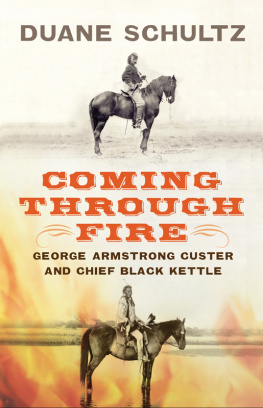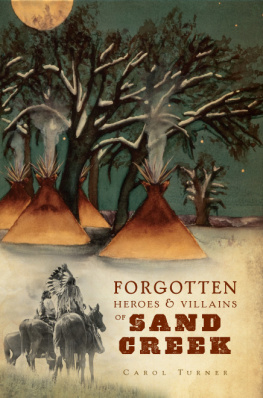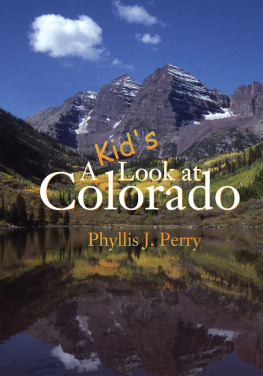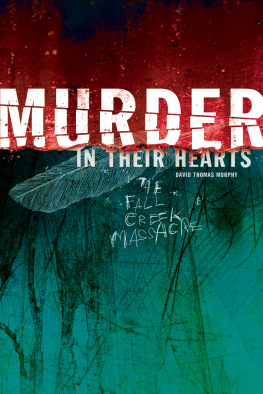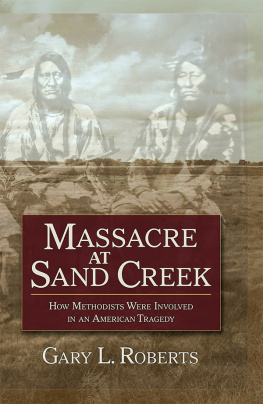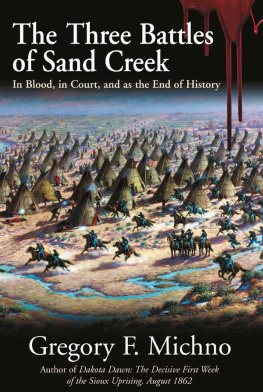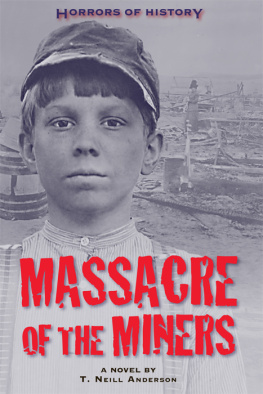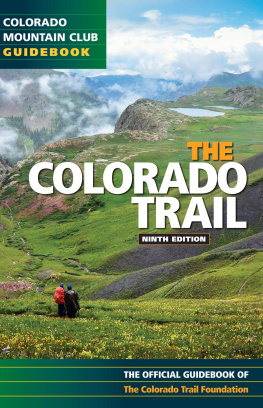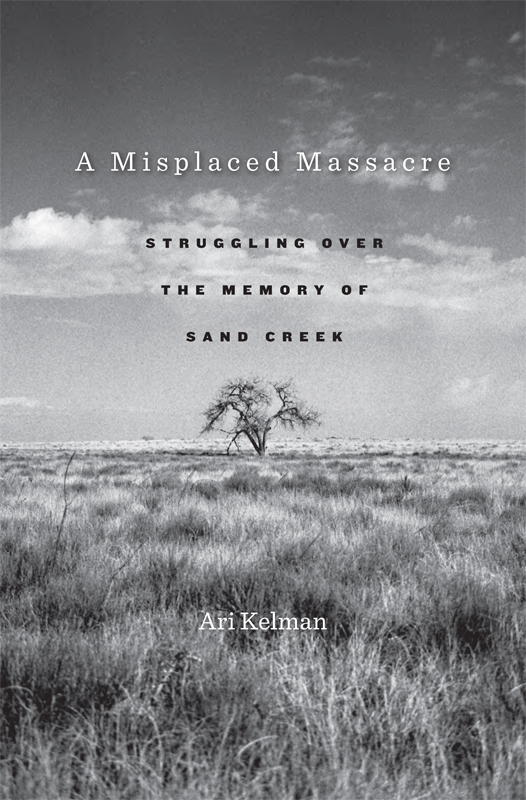A M ISPLACED M ASSACRE
A M ISPLACED M ASSACRE
Struggling over the Memory of Sand Creek
Ari Kelman
H ARVARD U NIVERSITY P RESS
Cambridge, Massachusetts, and London, England
2013
Copyright 2013 by the President and Fellows of Harvard College
ALL RIGHTS RESERVED
Jacket design by Tim Jones.
Jacket photo by Tom Carr.
Publication of this book has been supported through the generous provisions of the Maurice and Lula Bradley Smith Memorial Fund.
The Library of Congress has cataloged the printed edition as follows:
Kelman, Ari, 1968
A misplaced massacre : struggling over the memory of Sand Creek / Ari Kelman.
p. cm.
Includes bibliographical references and index.
ISBN 978-0-674-04585-9 (alk. paper)
1. Sand Creek Massacre, Colo., 1864. 2. Cheyenne IndiansWars, 1864. 3. Chivington, John M. (John Milton), 18211894. 4. United States. Army. Colorado Cavalry Regiment, 3rd (1864)History. 5. United States. Army. Colorado Cavalry Regiment, 1st (18621865)History. I. Title.
E83.863.K45 2012
978.8004'97353dc23 2012012122
C ONTENTS
I first became aware of Sand Creek more than two decades ago, while reading a letter written by an enlistee in the Iron Brigade, the unit that suffered the highest rate of casualties in the Union Army. At the time, I was looking through sources for my undergraduate thesis in one of the Wisconsin Historical Societys reading rooms, and I hoped that the tattered pages spread out before me would reveal what had motivated volunteer troops to fight with such ferocious courage during the Civil War. I never adequately answered that question, but I still remember details of the document: written in a shaky hand, the words filled with remorse that caught me off guard, the paper cracked and yellowed with age. Looking back, the note must have been composed sometime in 1865 as its author, a farm boy from Indiana, bemoaned an event that had taken place the previous year, a slaughter he labeled Chivingtons massacre. The passage caught my attention because the soldier seemed to think that an explosion of violence on the borderlands, a faraway massacre, somehow diminished the integrity of his own service. More than a little confused, and with no Internet search engines at my disposaltruly, those were benighted timesI approached one of my mentors and asked for help. Who was Chivington? What was this mysterious episode? I found out that Sand Creek was actually part of the Indian Wars and not related to the Civil War at all. Alas, another wasted day in the archivesor so I recall thinking.
Fifteen years later, having read more about Sand Creek while in graduate school, I moved to Colorado, where I taught history and discovered that the massacre can be hard to escape. Thoroughfares that crisscross urban areas along the Front Range, a chapel on the campus of the university where I worked, a lonely town in the middle of the states Eastern Plains, a snow-capped mountain looming over the city of Denverall these and more bear the names of Sand Creeks sponsors and perpetrators. It seemed that by the end of the twentieth century, though most Coloradans no longer celebrated the massacre, they were still haunted by that chapter of their history. After learning that the National Park Service, partnered with descendants of Sand Creeks victims and survivors, hoped to commemorate the violence, I began following that project closely. I attended public hearings, met with the principals in the memorialization process, and decided to write a book about how various groups of people have recalled the massacre very differentlyfrom its aftermath in late 1864 through the opening of the Sand Creek Massacre National Historic Site in 2007. I learned that the massacre has always been hotly contested, a vivid example of the truism that collective remembrance both shapes and is bound by contemporary politics. You hold in your hands the result of my efforts: a study of the collision of history and memory, of past and present, at Sand Creek.
As I began doing the research for this book, I realized that I would have to move beyond archival records and consult oral histories as well. As a result, I conducted well over a hundred interviews that eventually produced in excess of 3,500 pages of transcribed text. By the time this volume appears in print, copies of those transcriptions and the original taped conversations will be available as part of the National Park Services Sand Creek Massacre National Historic Site collection, housed within the Western Archaeological and Conservation Center in Tucson, Arizona. It probably goes without saying that as a participant-observer, I became part of the memorialization process that I documented. Nevertheless, I do not appear as a character in these pages. I made the decision to remain in the background because although I relate this story, it is not in any meaningful way mine, and the people who can legitimately claim it as their own are far more interesting than I am. After making that choice, I then adopted a nontraditional architecture for this book. Rather than proceeding neatly in chronological order, the events that I recount here often moved in fits and starts, as the past impinged on the present. To make this point, I use the central narrative of the historic sites creation as the books spine; I flesh out that tale with flashbacks to the era of the massacre and various moments when people struggled over Sand Creeks memory.
Those struggles taught me that I misunderstood the massacre when I first learned about it as an undergraduate pondering an especially beguiling primary source. From the perspective of the soldier whose letter I read, a young veteran gazing west from the trenches outside Richmond, Virginia, Sand Creek looked like an abomination and an aberration, a fit of frontier brutality that threatened to diminish glorious achievements hard won during a terrible but ultimately just war. As this book will demonstrate, by reversing that frame of reference, we can see that for Native people gazing east from the banks of Sand Creek, the Civil War, looked like a war of empire, a contest to control expansion into the West, rather than a war of liberation. The massacre, then, should be recalled as part of both the Civil War and the Indian Wars, a bloody link between interrelated chapters of the nations history.
A project like this rests upon the work of dedicated archivists and librarians. I owe a great debt to the outstanding staff members at the Bancroft Library at the University of California, Berkeley; the Beinecke Rare Book and Manuscript Library at Yale University; the Buffalo Bill Historical Center; the Colorado Historical Society; the Colorado State Archives; the Denver Public Librarys Western History and Genealogy Collections; the Huntington Library; the Library of Congress; the Montana State Archives and Libraries; the National Archives and Records Administration in Washington, DC; the National Archives and Records Administration, Great Lakes Region; the National Museum of the American Indian; the National Park Service, Intermountain Region; the National Park Service, Western Archaeological and Conservation Center; the New York Public Library; the Office of Interlibrary Loan and the Special Collections at the University of California, Daviss Shields Library; the Oklahoma Historical Society; the Oklahoma State Archives and Records Management; the Special Collections at Colorado Colleges Tutt Library; the Special Collections at the University of Colorado Library; the Special Collections at the University of Denvers Penrose Library; the Western History Collections at the University of Oklahoma; and the Wyoming State Archives.


